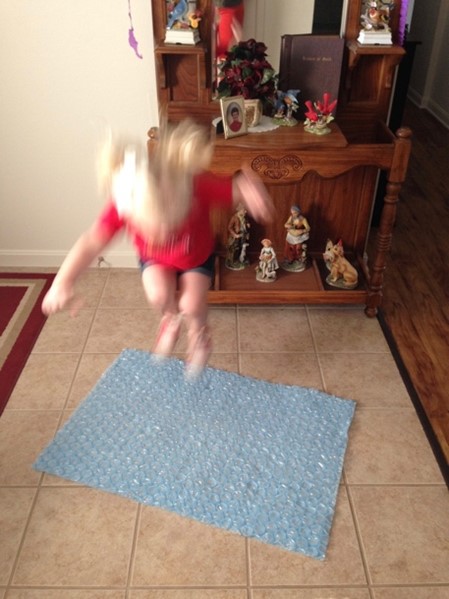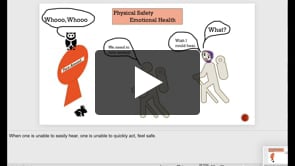Impact of Ear Infections On Brain Development
Ear infections decrease one’s ability to hear sound clearly and strongly; thus impacting brain development. Chronic, poor middle ear health is associated with decrease stimulation along auditory neural pathways from the cochlea to the brain.
Chronic Ear Infections?
Your Moore Auditory-Visual Questionnaire Report will share intensity of behavioral difficulties related to specific areas of concern improving communication with Cheri, professionals, doctors, and therapists.
Need Help?
Using hearing test results, Cheri Moore helps children and adults improve their ability to respond to auditory integration training and maintain progress.
It is an honor to work with Cheri Moore on her journey with auditory integration therapy. She has shown a consistent desire to go above and beyond in every aspect of her practice and training. Cheri’s quest for greater understanding and her thirst for knowledge are demonstrated daily. It is a pleasure to work with a professional who is so eager to learn and apply new information to help her clients reach their best possible outcomes.
Kathy J Harvey-Jones, MsEd, Audiology, BC-HIS
Click on the video to learn how behaviors are affected when there is temporary hearing loss from poor ear, nose and throat health.
Ear Infections Increase Risk for Disrupting Brain Development
The health of the hearing system is essential to promote brain development in children affecting brain development. Numerous studies found that disruption of the
(Casselbrant, Gravel, Margolis, Bellussi,, Dhooge, & Downs, 2002; Vernon- Feagans & Proctor, 1994; Hasenstab in 1992; and Benasich & Tallal, 2002).
Researchers found that “adverse effects in speech, language development, and balance in some children” culminated in learning and behavioral problems.
(Casselbrant, Gravel, Margolis, Bellussi, Dhooge, & Downs, 2002) (Klein, 2001, as cited in J. S. Stenton, 2003).
Video
Learn how you hear your own voice through the fun activity in the video below.

Overcoming CAPD with Autism
My daughter was diagnosed with autism and central auditory processing disorder (CAPD). We schooled her at home, and even with my background in teaching, it was very difficult. I would have to fight with her to make her begin her school work. While teaching her, she...
A Future for My Daughter: Diminishing L.D. / Sound Sensitivities
Ashylyn did not talk much when she was little and was shy about interacting with people. I sent her to a private Christian school for kindergarten hoping she would come out of her shell. Unfortunately, there were more problems than just shyness. I remember feeling...
CAPD Diagnosis at 21 years; Success with Hearing Aids and AIT
Finding out that my 21-year-old son had a hidden hearing loss (CAPD) was a relief. He is very intelligent. Not getting the right help was causing feelings of depression and hopelessness. Finally, an answer to the questions I have had for so long! He never really fit...
A Relieved Grandmother: CAPD Success with Hearing Aids
I was at my wit’s end when I met Cheri Moore. My oldest granddaughter, whom I had guardianship, had been tested for every possible psychological learning disability, including autism. She was prescribed medication, which did not seem to help. Still, no diagnosis. I...
A Mother’s Journey Into the World of Dyslexia
Diagnosing Dyslexia During the spring of 2007, I attended Dianne Craft’s conference where I learned that dyslexia affected the auditory processing center and the visual processing center. Perhaps I had found help for my daughter’s reading and spelling struggles. She...
Adenoids Increase the Risk of Ear Infections
Ear infections are commonly associated with enlarged adenoids that increase the risk of chronic congestion due to the blockage of eustachian tubes. Under-activity occurs in the hearing system when there are ear infections, enlarged adenoids, or a lack of strong sound stimulation along auditory neural pathways.
Auditory Integration Training and Vestibular Stimulation
Auditory Integration Training pushes stimulation equally to both ears. Headphones gently stimulate your cochlear and vestibular chambers. If your hearing evaluation shows that one ear is weaker than the other ear, Berard Auditory Integration Training puts more volume in the weaker ear. Before and after an auditory integration training session, clients complete thirty minutes of vestibular play.

Ear Infections Decrease Hearing
Researchers confirm that ear infections decrease hearing. When chronic, ear infections also impact brain development. Brain development is critical for obtaining developmental milestones in all ages. Researchers found that the brain develops until age 26.
Researchers Zargi, M. and Boltezar, H.(1999) consistently found the following difficulties in 33 infants and toddlers experiencing three or more acute ear infections before age two, a chronic condition.
(Zargi, M., Boltezar, H. (1992). Effects of recurrent otitis media in infancy on auditory perception and speech. American Journal of Otolaryngology. 13 (6), 366.) (Supported in June 2003, Report of the Eighth Research Conference; Supported in 2010 by Ungkanont, K., Charuluxananan, S., Komoltic C.)
- Temporary hearing loss up to 40 decibels (dB) — a Conductive Hearing Loss
- Continuing fluid without an ear infection lasted several weeks in 50% of infants/preschoolers
- Continuing fluid without an ear infection lasted up to six months in 10% of infants/preschoolers
- Decreased perception of sounds while listening in 88% of toddlers
- Approximately 4 out of 8 parents lacked awareness of hearing impairment in the 8 toddlers who tested positive for a conductive hearing loss due to fluid in the middle ear.
Statistically significant differences between the two control groups showing an increased risk for decreased sound energy reaching the cochlea:
- Greater hearing loss during a common cold (.0003)
- Abnormal color and position of ear drum (tympanic membrane .0001)
- Lower pressure (60 to 70 mm H2O) in the middle ear when compared to participants with typical-sized adenoids.
Cheri Moore’s Findings
Cheri Moore’s experiences and observations improved clients’ response to vision therapy. Clients with hearing loss maintained progress only when hearing aids like the Roger FM Hearing System were consistently worn.
Cheri’s desire to improve clients’ emotional responses during auditory integration training prompted her to track clients for years after they completed auditory integration training. Cheri discovered a high rate of co-existing visual processing difficulties and sound intolerance, with or without a hearing loss.
Some clients experienced increased visual processing difficulties during auditory integration training, like chronic double vision. Thus, Cheri collaborated with optometrists specializing in vision therapy to track each client’s progress. Individualized Auditory-Visual Protocols have resulted in improved responses to auditory integration training and vision therapy.

Overcoming CAPD with Autism
My daughter was diagnosed with autism and central auditory processing disorder (CAPD). We schooled her at home, and even with my background in teaching, it was very difficult. I would have to fight with her to make her begin her school work. While teaching her, she...
A Future for My Daughter: Diminishing L.D. / Sound Sensitivities
Ashylyn did not talk much when she was little and was shy about interacting with people. I sent her to a private Christian school for kindergarten hoping she would come out of her shell. Unfortunately, there were more problems than just shyness. I remember feeling...
CAPD Diagnosis at 21 years; Success with Hearing Aids and AIT
Finding out that my 21-year-old son had a hidden hearing loss (CAPD) was a relief. He is very intelligent. Not getting the right help was causing feelings of depression and hopelessness. Finally, an answer to the questions I have had for so long! He never really fit...
A Relieved Grandmother: CAPD Success with Hearing Aids
I was at my wit’s end when I met Cheri Moore. My oldest granddaughter, whom I had guardianship, had been tested for every possible psychological learning disability, including autism. She was prescribed medication, which did not seem to help. Still, no diagnosis. I...
A Mother’s Journey Into the World of Dyslexia
Diagnosing Dyslexia During the spring of 2007, I attended Dianne Craft’s conference where I learned that dyslexia affected the auditory processing center and the visual processing center. Perhaps I had found help for my daughter’s reading and spelling struggles. She...

